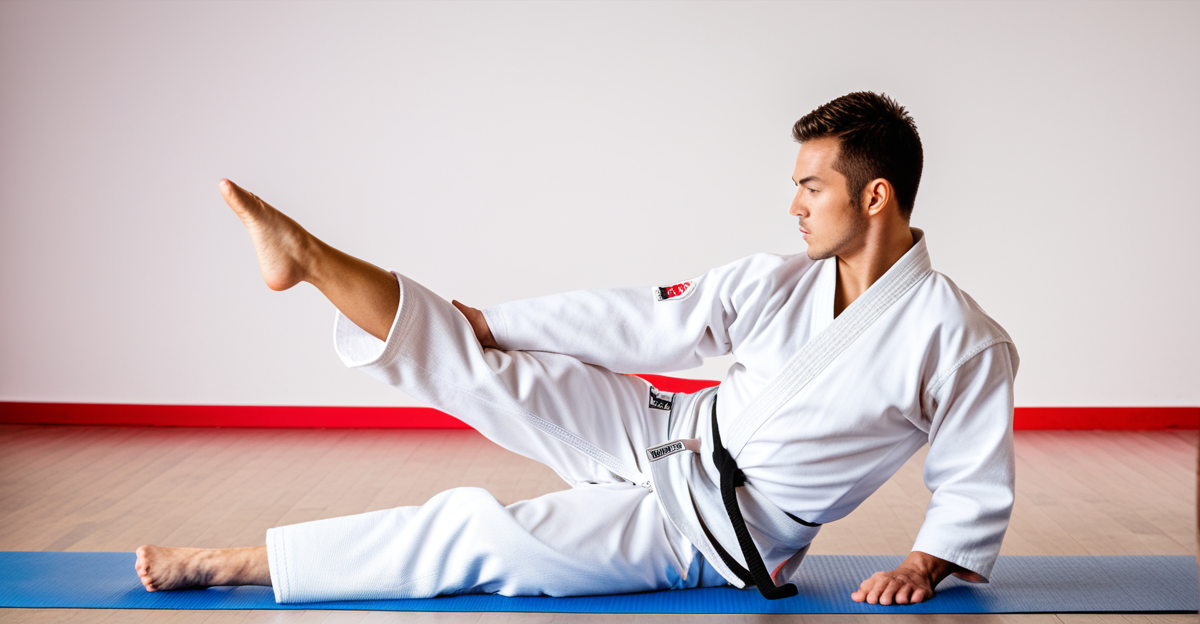Expert-Designed Karate Stretching Routines for UK Practitioners
For karate practitioners in the UK striving to improve agility and reduce injury risk, expert stretching methods offer tailored solutions that address the demands of martial arts. A core stretching routine typically targets hips, hamstrings, and shoulders, essential muscle groups for karate’s dynamic movements. Experts recommend combining static stretches, held for 20-30 seconds, with dynamic movements to prepare muscles effectively.
Common challenges include maintaining consistency and avoiding overstretching. To tackle these, professionals suggest starting with gentle flexibility exercises for karate, gradually increasing intensity and duration. Repetitions usually involve 2-3 sets per stretch, aiming for steady progress without discomfort.
In parallel : Elevate your game: essential ground-and-pound strategies for mma fighters in the uk
Overcoming muscular tightness requires patience and proper technique. Expert advice stresses correct posture and controlled breathing during each stretch to enhance effectiveness. Incorporating these routines consistently into warm-up or cool-down sessions supports both performance and injury prevention. Embracing these carefully designed karate stretching routines UK-wide can significantly advance practitioners’ flexibility and readiness for training or competition.
Targeted Flexibility Exercises to Maximize Karate Performance
Enhance your karate skills with focused stretching techniques
In the same genre : Mastering breakfalls: key strategies for uk judo coaches to boost athlete performance
Maximizing performance in karate requires targeted flexibility exercises for karate that address critical muscle groups such as the hips, hamstrings, and shoulders. These areas enable essential movements like kicks, strikes, and stances. Implementing both dynamic and static stretches strategically can elevate your training outcomes.
Dynamic stretching for martial arts involves controlled, movement-based stretches performed before practice to warm muscles and increase blood flow. Examples include leg swings and arm circles, which prepare the body for explosive actions. In contrast, static stretches—where muscles are held in extended positions—are best suited for post-training cool-downs to improve long-term flexibility.
To support advanced kicks and stances, drills focusing on hip mobility and hamstring flexibility are crucial. For instance, slow, deep lunges combined with trunk rotations enhance mobility, while active hamstring stretches improve leg lift height. This integrated approach, part of expert stretching methods, ensures your flexibility develops safely and effectively, reducing injury risks while boosting performance. Practicing these karate flexibility exercises UK-wide empowers practitioners to execute dynamic techniques with precision and control.
Targeted Flexibility Exercises to Maximize Karate Performance
Understanding when and how to stretch for peak results
Karate practitioners benefit most from a focused approach to karate flexibility exercises UK that prioritizes the hips, hamstrings, and shoulders—muscle groups crucial for executing precise kicks and stable stances. Experts distinguish between dynamic stretching for martial arts and static holds: dynamic stretches activate muscles and increase blood flow, ideal during warm-up phases, while static stretches improve muscle length and are best suited for cool-down sessions.
Typical dynamic exercises include controlled leg swings and arm rotations, performed for 10-15 repetitions per limb, enhancing mobility without fatigue. For static stretches such as hamstring reaches or shoulder crossovers, holding for 20-30 seconds per set with 2-3 repetitions promotes lasting flexibility gains.
To support advanced techniques, drills often integrate controlled balance movements combined with targeted stretching, reinforcing coordination and muscular control. By strategically blending these karate flexibility exercises UK with regular practice, practitioners elevate performance, reduce injury risk, and build the foundation necessary for more demanding karate maneuvers.
Expert-Designed Karate Stretching Routines for UK Practitioners
Tailored techniques for consistent, safe flexibility gains
A well-crafted karate stretching routine UK must focus on precision and progression. Core routines typically include hip openers, hamstring stretches, and shoulder mobilisations—these areas endure the highest stress during karate practice. Experts recommend a structured approach: perform each stretch for 20-30 seconds, completing 2-3 gentle repetitions per session to maximise flexibility without risking injury.
Common challenges such as inconsistency and overstretching are best managed by adhering to expert stretching methods focused on mindful movement and controlled breathing. Practitioners should start with moderate intensity holds, gradually increasing duration as flexibility improves. This phased approach addresses muscular tightness and builds resilience effectively.
Incorporating these flexibility exercises for karate into pre- or post-training routines ensures muscles are primed and recover optimally. Applying these expert guidelines helps UK karateka maintain steady progress, balancing performance enhancement with injury prevention.
Expert-Designed Karate Stretching Routines for UK Practitioners
A core karate stretching routine tailored to UK practitioners emphasizes gradual progression to build lasting flexibility. Experts recommend holding static stretches for 20-30 seconds, performing 2-3 repetitions per stretch. This approach balances effectiveness with injury prevention. Focusing on hips, hamstrings, and shoulders addresses the muscle groups critical for karate’s explosive movements.
Common challenges in following karate stretching routines UK include inconsistent practice and overstretching. To overcome these, expert stretching methods advise starting gently and listening to the body’s limits. Controlled breathing and maintaining correct posture during stretches optimize muscle elongation while reducing strain.
For example, hamstring stretches should be done slowly without locking the knees, while shoulder stretches require relaxed, deliberate arm positioning. Repeated practice within a structured routine enhances muscle pliability and joint mobility specific to karate techniques. Adhering to these expert guidelines ensures practitioners safely build flexibility, improve technique, and reduce injury risks in their karate training.
Expert-Designed Karate Stretching Routines for UK Practitioners
Expert-designed karate stretching routines UK focus on developing flexibility with a structured, progressive approach. A core routine typically includes precise stretches targeting hips, hamstrings, and shoulders—key muscle groups intensely engaged during karate training. Each stretch should be held for 20-30 seconds, with 2-3 repetitions per session, balancing effectiveness with safety.
Common challenges include inconsistency in practice and the risk of overstretching. Experts emphasize starting with gentle intensity and gradually increasing stretch duration as flexibility improves, a principle central to effective flexibility exercises for karate. Incorporating controlled breathing enhances muscle relaxation and stretch depth, preventing injury.
To overcome muscular tightness, practitioners are advised to maintain proper posture during stretches, avoiding sudden movements or bouncing. Using these expert stretching methods consistently—either during warm-up or cool-down phases—supports steady flexibility gains and injury prevention, optimizing performance for karate practitioners across the UK.
